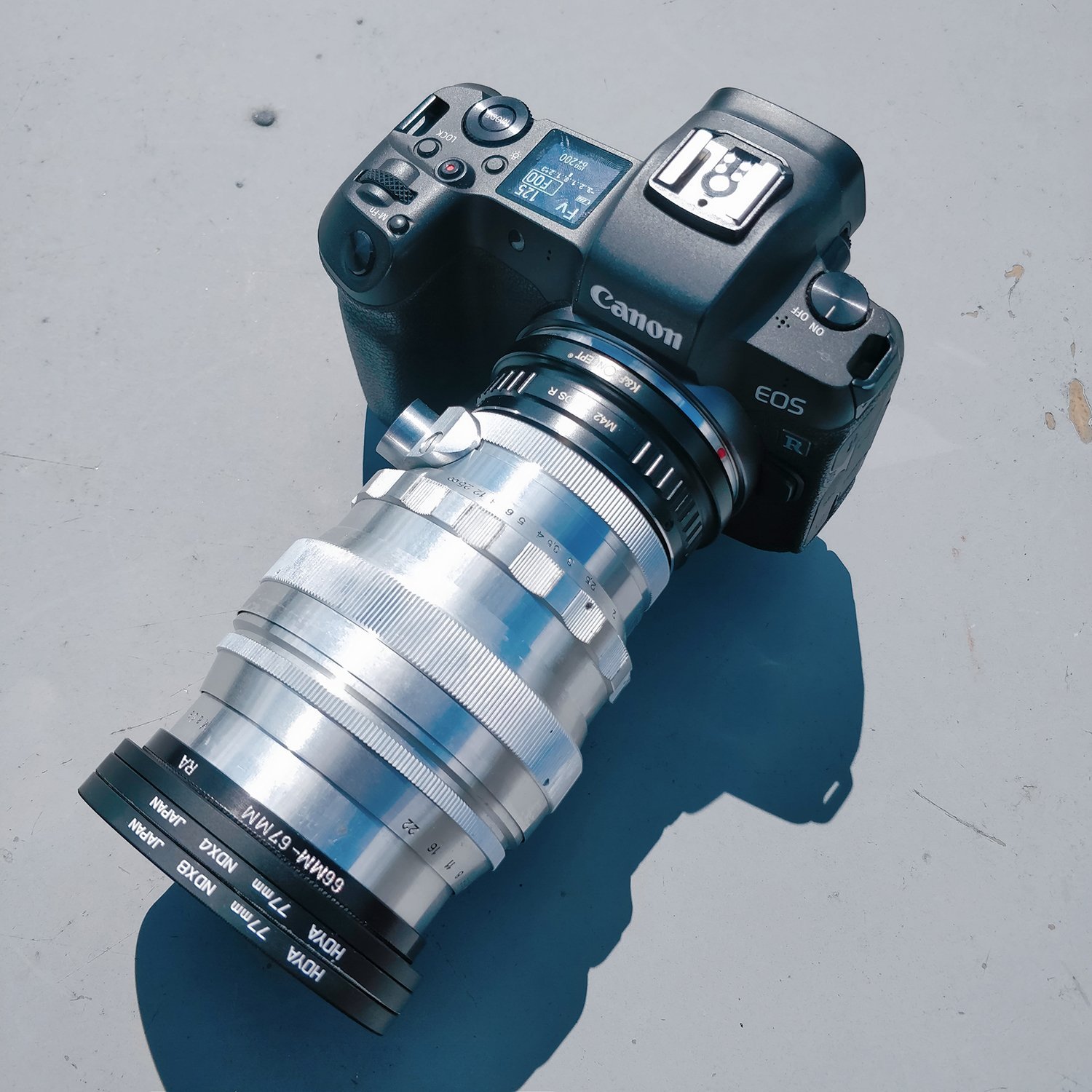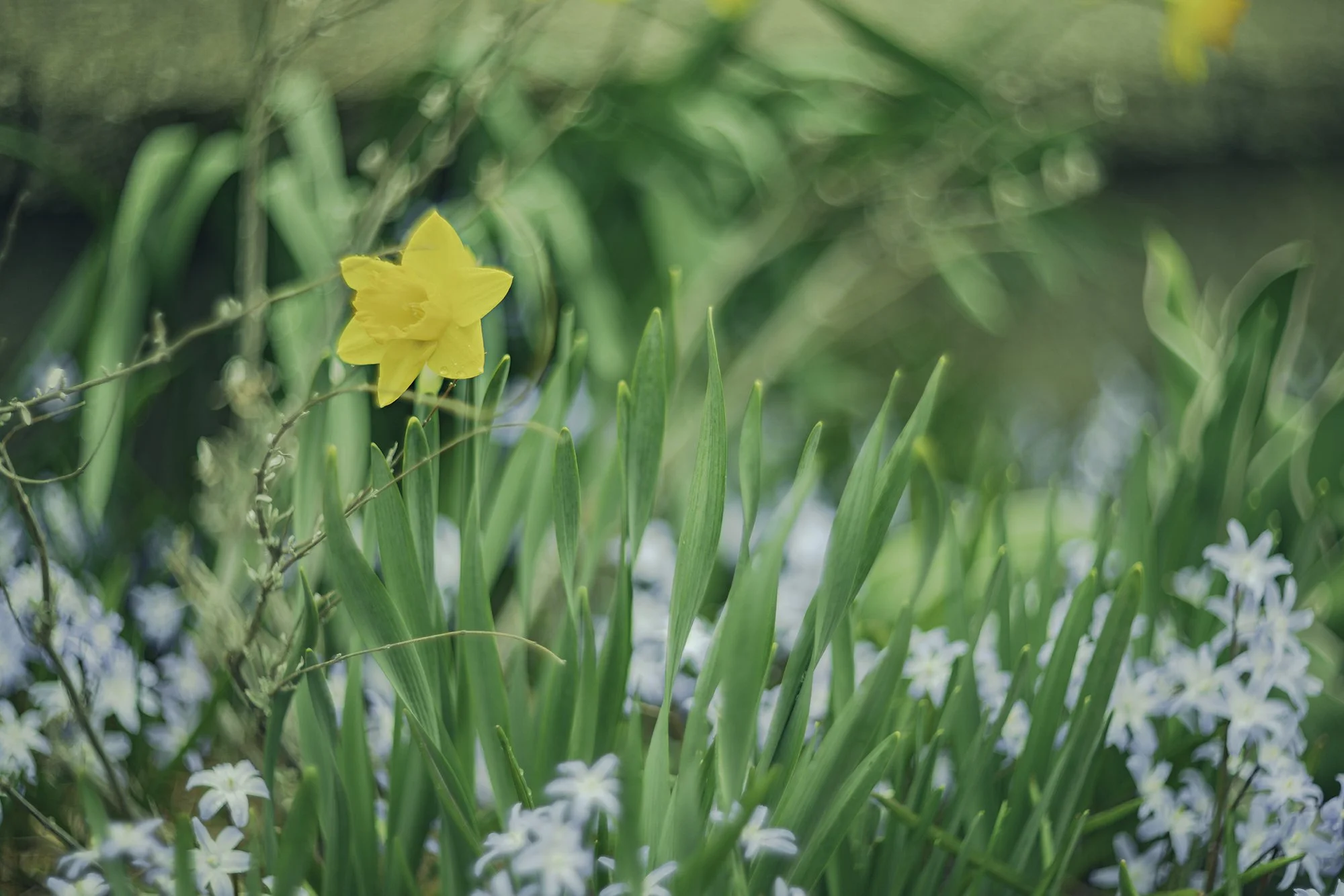Helios-40 85mm f1.5 - Lens Info
Helios-40 85mm f1.5
The early Helios-40 85mm f1.5, often identified by its distinctive silver barrel, is a lens that has captured the imagination of photographers and lens enthusiasts alike. Known for its unique optical characteristics, this lens is particularly prized for its mesmerizing swirly bokeh, a visual effect that adds a dreamlike and ethereal quality to images. The Helios-40's rendering is attributed to its Sonnar-type optical formula and the specific arrangement of its glass elements, which contribute to the pronounced bokeh swirls, especially when shooting wide open. This lens has gained a cult following for its ability to create images with a distinct and artistic flair, particularly in portrait and close-up photography.
Photographers often appreciate the Helios-40's ability to produce images with a vintage charm, featuring a central subject surrounded by a swirling, circular background. While its build quality may not match modern standards, the Helios-40's character and the unique visual signature it imparts on images make it a sought-after lens for those who prioritize artistic expression over clinical precision. Whether capturing portraits, nature, or everyday scenes, the Helios-40 85mm f1.5, with its silver allure, remains a beloved and iconic lens for those seeking a touch of vintage magic in their imagery.
LENS SPECS
Release Date: 1957
Format: 35mm
Mount: M39
Filter: 66mm
Aperture Blades: 10
Aperture Range: 1.5 - 22
Min Focus Distance: 1.15m
Weight 900g
Weather Sealing: No
Optical Design: 6 elements in 4 groups
APS-C Conversion Approx.: 136mm
History
The Helios-40 85mm f1.5 is a legendary vintage lens, celebrated for its distinctive optical qualities and signature bokeh. Manufactured in the Soviet Union, this Russian-made lens is a standout in the Helios lineup, known for its striking "swirly" background blur that has earned it a devoted following among photographers seeking a classic, nostalgic look. Produced from the late 1950s to the early 1990s, the Helios-40 went through multiple iterations, each with subtle variations in build quality and optical performance. What makes Soviet lenses particularly fascinating is their historical context: during Soviet era communisms, lens production was centralized under state ownership rather than driven by individual corporations such as Canon or Nikon. So rather than buying into a brand you would be buying into a factory. Different factories were responsible for manufacturing these lenses, and the quality control of each factory varied. Each Helios-40 lens carries a unique factory stamp on it indicating which factory produced it. This stamp not only helps identify the lens' origin but also impacts its value, as lenses from certain factories are often considered to have better craftsmanship and more consistent quality control than others. For collectors and vintage lens enthusiasts, Soviet lenses are more than just a piece of glass, they are a window into a fascinating era of lens making history. The lens i’m reviewing was built in the KMZ plant.
Copied Design
Talk about how the helios-40 is a copied design.
World war 2 reparations in factory equipment
Design and Build Quality
This review covers the original silver-bodied Helios-40 f1.5 manufactured in the Krasnogorsk Mechanical Works (KMZ) factory, first released in 1957. Featuring a robust all-metal construction, this lens lives up to the phrase "built like a tank." It's incredibly sturdy, with a solid, durable feel that’s characteristic of vintage Soviet-era lenses.
Weight
The first thing you'll notice when you hold this lens is its weight. It tips the scales at a hefty 900 grams (2 pounds) of glass and metal. So substantial is its build that it even includes a built-in tripod mount. When mounted on modern mirrorless cameras you’ll definitely notice the front heavy balance of your setup.
M39 Mount
The earlier models of the Helios-40 like the one in tis review, featured an M39 mount, while later versions switched to the slightly larger M42 mount. One of the more confusing aspects, especially for those new to vintage lenses, is that there are two types of M39 mount lenses: one for Single Lens Reflex (SLR) cameras, and another for Rangefinder cameras. The flange distances (distance from the back of the lens to the film) for each system are different, so using the wrong M39 adapter, like I did, will prevent you from achieving proper focus. It’s a lesson learned the hard way. For more tips on adapting this lens, check out the videos linked below and avoid making the same mistake I did.
🎬 HELIOS-40 UNBOXING AND MOUNTING TO MIRRORLESS CAMERA
🎬 ADAPTERS FOR M39 & M42 VINTAGE LENSES
To mount this M39 lens to my Camera I had to use two adapters. I small M39 to M42 converter than an M42 to (your camera mount) RF adapter to get the lens onto my camera.
Special Features
Intro
Aperture Mechanism
Talk about the unique aperture feature
Preset aperture mechanism
66mm Filter Thread
The Helios-40 has a very unique front filter thread of 66mm. Manufacturers don’t make 66mm filters anymore, in fact I don’t know if they ever did. As a result, you'll need to use a 66mm to 67mm step-up ring if you want to use filters with this lens. Fortunately, these step-up rings are easy to find on eBay or Amazon. I highly recommend picking one up, and while you're at it, grab a 67mm screw-on lens hood as well. I’ll go into more detail on this in the optical performance section, but to keep it brief, a lens hood is highly recommended for this lens, as it’s particularly prone to lens flare.
Gear Shots
Focusing
Focusing the Helios-40 can be both frustrating and rewarding. If you're considering this lens, be prepared for a learning curve. Mastering the focus mechanics takes time, and you’ll need to adjust your hand movements to avoid the urge to smash the lens out of frustration. One common issue with screw-mount lenses is that if the focus ring is stiff, you can unintentionally unscrew the lens while focusing. There are two solutions to this:
To prevent unscrewing the lens while shooting, you need to learn to apply pressure to the lens (either downward or to one of the sides) while focusing, keeping the screw mount in place. Once you get the hang of this technique, focusing becomes much easier.
Alternatively, you can disassemble the lens and re-grease the focus mechanism, making it smoother and more responsive.
Another challenge is the location of the focus ring. Unlike many lenses where the main focus ring is in the middle, the Helios-40's focus ring is closer to the lens mount. Given the weight of the lens, you’d naturally want to support it by placing your hand further forward, but instead, you’ll need to reposition your hand toward the rear to focus making your setup feel more front heavy than it needs to be.
If you’re new to this lens, its focusing mechanics can definitely be frustrating, trust me, I’ve been there. But once you develop muscle memory and focusing becomes second nature, you'll be rewarded with stunning images. The lens’ imperfections, such as its unique lens flares, swirly bokeh, and even buzz saw bokeh contribute to some truly captivating images.
Optical Performance
I always say there are two types of vintage lenses. You have the high quality vintage glass like the Leica Summicron 90mm f2 which is a masterpiece of optical perfection but boring because it looks like modern glass. Then on the other hand you have the perfectly imperfect lenses with flawed designs and bad coatings that add lens flares, halation, soft edges or abnormal bokeh patterns. This Helios-40 f1.5 is the latter. It’s flaws are what make this lens so special.
Designed for black and white film
optical design based on the Carle zeiss biotar 75mm f1.5. It has 6 elements in 4 groups and 10 aperture blades.
Lens hood
Versatility
The Helios-40 is truly a unique lens. While its 85mm focal length is somewhat limited in versatility—being primarily suited for portraiture and not much else—it opens up a world of creative possibilities. Its real strength lies in the distinctive effects it delivers. Thanks to the older lens coatings, you'll achieve rich, vintage colors that are hard to replicate with modern lenses. The aperture blades create a variety of bokeh patterns, adding a layer of artistic flair to your shots. And when you open the lens to f/1.5, you’re rewarded with some of the smoothest, most pleasing bokeh you’ll find. The lens also has a knack for creating captivating lens flares when shooting bright light sources, making your images look otherworldly and sparking curiosity among your audience. However, it’s important to note that this lens is not for the faint of heart. It requires patience and practice to truly master, but the creative rewards are more than worth the effort.
User Experience
This lens is both incredibly amazing and frustrating at the same time. There’s a definite learning curve, and if you’re willing to invest the time to understand its eccentricities, you’ll gain a powerful tool capable of producing truly unique for your portfolio. What you get from this lens is entirely dependent on the effort you put into mastering it. With patience and practice, the rewards are well worth it, offering a creative experience
Sample Photos
Final Thoughts
I understand how tempting it can be to buy the Helios-40, it’s an incredibly unique lens. But before you make the purchase, I want to give you one important piece of advice: don't buy this lens unless you're truly willing to invest the time and effort to learn how to use it. Trust me, if you’re not prepared to get frustrated and push through the learning curve, this lens will likely end up sitting unused on your shelf. The Helios-40 demands patience, it’s not a "point-and-shoot" lens. However, if you're willing to put in the work, you’ll be rewarded with some of the most distinctive and creative images you can capture.
What makes this lens special is that it slows down the process of photography. It forces you to slow down, think more intentionally about each shot, and carefully adjust settings. In a world where digital photography often feels fast-paced and automated, the Helios-40 brings you back to the basics, back to a time when photography required more deliberate focus and consideration. This is a lens that makes you engage with the art of photography on a deeper level.
Overall, I truly enjoy using this lens. It offers something that few modern lenses can match: a hands-on, immersive experience that brings out the creative possibilities in every shot. My only regret is not having more time to use it. Between running and business and the YouTube channel time is limited.
Here is a really good video that shows off this lens’ dreamy vibes.


























































































